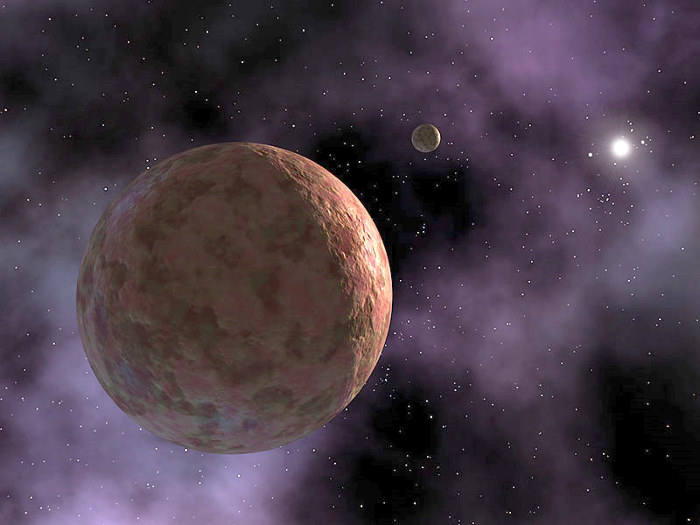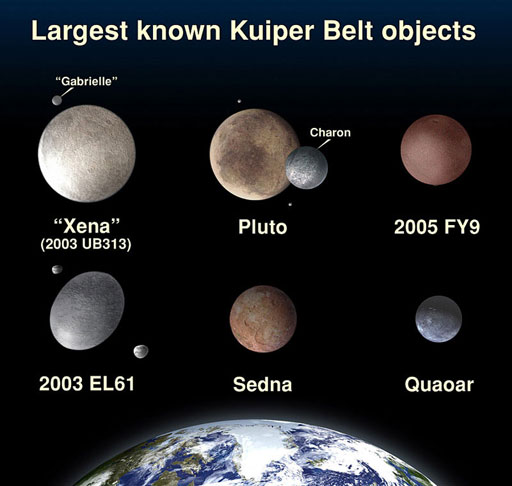|
Enigmas in Our Solar System New Planets Discovered |
||
|
.
Artist's Conception: Sedna -
Sedna is extremely far from the Sun, in the
coldest known region of our
Solar System, where temperatures never rise
above minus minus 400 degrees
Fahrenheit (240 degrees Celsius). The planetoid
is usually even colder,
because it approaches the Sun only briefly
during its 10,500-year solar
orbit. At its most distant, Sedna is 130 billion
kilometers (84 billion
miles) from the Sun, which is 900 times Earth's
solar distance.
Sedna was discovered on November 14, 2003 by a CalTech team, using the 48-inch Samuel Oschin Telescope at Palomar Observatory. The object lies more than 8 billion miles from the Earth, making it the most distant object ever observed in the solar system. Its official IAU provisional designation was minor planet 2003 VB12, but as of September 28, 2004 it officially became known as Sedna after the Inuit goddess of arctic sea life. |
||
|
.
The Growing Solar System Family The orbit of 2003 UB 313 (shown in red) relative to the other planets in the solar system and Sedna (large white oval).
The "original" nine planets are indicated as well as 2003 UB313 (in red) and part of Sedna's orbit. 2003 UB313 appears to cross inside of Pluto's orbit but this is due to the fact that 2003 UB313 is tilted by about 45º relative to the rest of the solar system. SOURCE: Gemini Observatory |
||
|
Gemini Near-infrared Spectra .
Recent spectroscopic studies of infrared light reflected from the surface of Sedna reveal that it is probably unlike Pluto and Charon since Sedna's surface does not display evidence for a large amount of either water or methane ice. Due to Sedna’s extreme distance from the Sun, the frigid surface has probably been untouched for millions of years by anything except cosmic rays and solar ultraviolet radiation. Gemini Observatory astronomer Chad Trujillo led an effort by the same California Institute of Technology research team responsible for Sedna's original discovery to obtain spectra of this distant planetoid using the Near Infrared Imager (NIRI) on Gemini North. Their aim was to better understand the surface of this distant world and how it has evolved since its formation. “It is likely that Sedna has experienced an extremely isolated life in the outskirts of our solar system,” said Trujillo. “Out there beyond what we used to think was the edge of the solar system, interactions or collisions between bodies are probably very rare. Our observations confirm what you would expect from a surface that has been so far out in our solar system for such a long time and exposed to space weathering.” SOURCE: Gemini Observatory |
||
|
.
|
||
References:
|
||
| FAIR USE NOTICE: This page contains copyrighted material the use of which has not been specifically authorized by the copyright owner. Pegasus Research Consortium distributes this material without profit to those who have expressed a prior interest in receiving the included information for research and educational purposes. We believe this constitutes a fair use of any such copyrighted material as provided for in 17 U.S.C § 107. If you wish to use copyrighted material from this site for purposes of your own that go beyond fair use, you must obtain permission from the copyright owner. | ||
|
|





